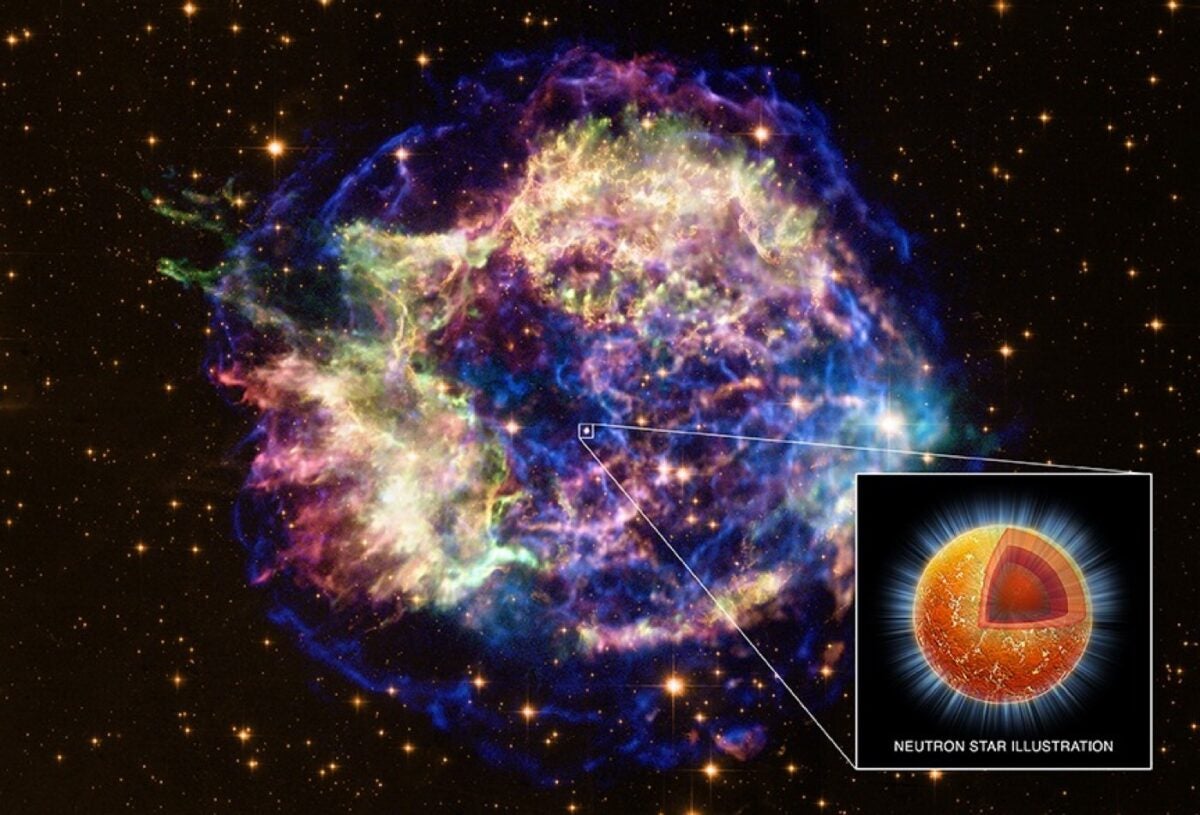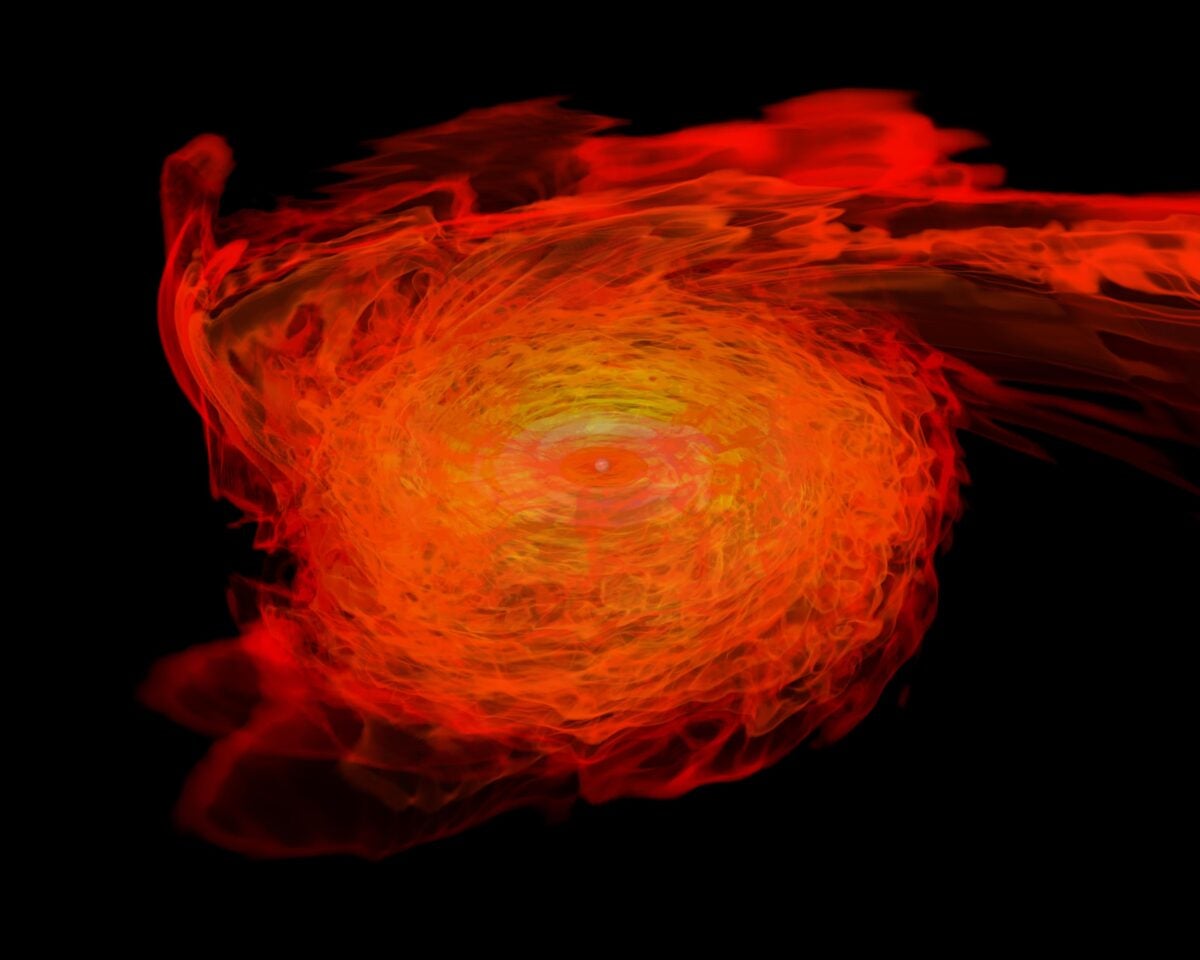
What if a tablespoonful of a neutron star was brought to Earth?
Caroline Adams
Portland, Oregon
Before we can know what happens when our spoonful comes to Earth, let’s think about what’s in our spoon: a superdense collection of neutrons.
A neutron star is the remnant of a massive star (bigger than 10 Suns) that has run out of fuel, collapsed, exploded, and collapsed some more. Its protons and electrons have fused together to create neutrons under the pressure of the collapse. The only thing keeping the neutrons from collapsing further is “neutron degeneracy pressure,” which prevents two neutrons from being in the same place at the same time.
Additionally, the star loses a lot of mass in the process and winds up only about 1.5 times the Sun’s mass. But all that matter has been compressed to an object about 10 miles (16 kilometers) across. A normal star of that mass would be more than 1 million miles (1.6 million km) across.
A tablespoon of the Sun, depending on where you scoop, would weigh about 5 pounds (2 kilograms) — the weight of an old laptop. A tablespoon of neutron star weighs more than 1 billion tons (900 billion kg) — the weight of Mount Everest. So while you could lift a spoonful of Sun, you can’t lift a spoonful of neutron star.
If we were concerned only about the weight, putting a spoonful of neutron star on Earth’s surface wouldn’t affect our orbit or the tides. It’s like adding another mountain. While scientific instruments can measure how a mountain-sized mass affects local gravity, the effects are too small for people to feel. So unless you stood right next to the spoon, you wouldn’t notice.

However, we’re not just worried about the mass in the spoon. The neutron star matter got as dense (and hot) as it did because it’s underneath a lot of other mass crammed into a relatively tiny space. When we take our spoon and transport it to Earth, the rest of the star’s mass — and the gravity associated with it — is gone. Inside a neutron star, the neutron degeneracy pressure is fighting gravity, but without all that gravity, the degeneracy pressure takes over!
Imagine you have a can of soda, and it’s all shaken up. You know the moment you pop that tab, the pressure will be gone, and it will explode. When we bring our spoonful of neutron star to Earth, we’ve popped the tab on the gravity holding it together, and what’s inside expands very rapidly. A spoonful of neutron star suddenly appearing on Earth’s surface would cause a giant explosion, and it would probably vaporize a good chunk of our planet with it.
Valerie Mikles
National Oceanic and Atmospheric Administration Contractor,
Quality Assurance, I.M. Systems Group,
College Park, Maryland
This article was first published in the September 2018 issue of Astronomy.









